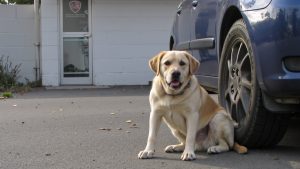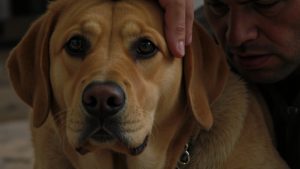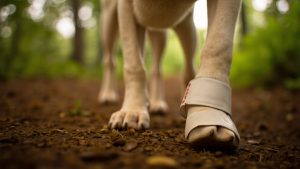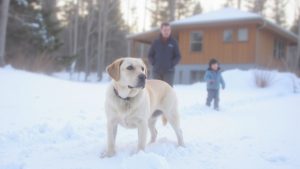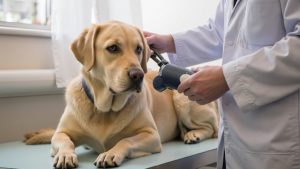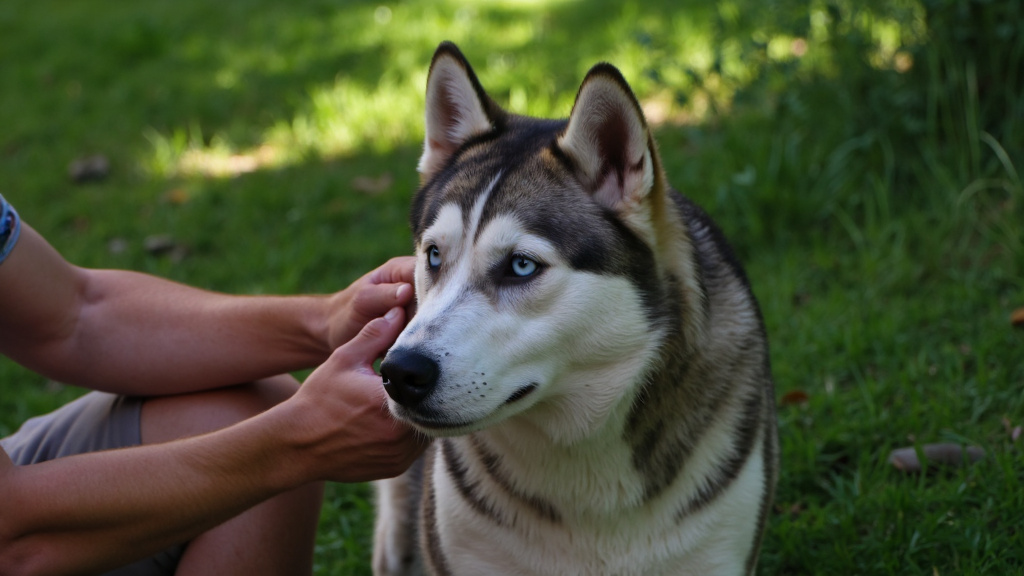
The crunch of leaves underfoot signals more than just the arrival of autumn—it marks a critical transition period for dogs’ coats and skin. As temperatures drop, dogs naturally begin shedding their lighter summer coats to make way for thicker, warmer winter fur. This seasonal coat change isn’t just biology at work—it requires attention from pet owners.
Countless Labradors and Huskies literally blow their coats during October, leaving fur tumbleweeds rolling across living room floors. Without proper grooming, this natural process can lead to matting, skin irritation, and uncomfortable hot spots. Double-coated breeds like Shepherds and Samoyeds experience dramatic shedding that requires specialized brushing techniques to manage effectively.
Beyond shedding management, fall presents unique challenges for canine skin health and paw protection. Dropping humidity levels can trigger dry, flaky skin just as it does for humans. Meanwhile, paws that trotted happily across summer grass now face rough terrain, fallen leaves hiding sharp objects, and eventually cold, damp conditions that can crack sensitive paw pads. A thoughtful fall grooming routine addresses these seasonal vulnerabilities, transforming what could be an uncomfortable transition into a chance to strengthen dogs’ overall wellbeing as the weather turns.
How Can Fall Grooming Help Manage Dog Allergies and Moisturizing Needs?

As summer transitions to fall, dogs face a unique set of seasonal challenges. The crisp autumn air may feel refreshing, but it often brings a wave of allergens and skin issues that need special attention. Fall’s dropping humidity levels and environmental changes can affect a dog’s skin and coat, making proper grooming essential.
Understanding Fall Allergies in Dogs
Fall allergies in dogs often manifest differently than human allergies. While people might sneeze and get watery eyes, dogs typically show allergic reactions through their skin. Ragweed pollen peaks in September and October, creating irritants that cling to a dog’s fur during scenic autumn walks. Mold spores flourish in piles of damp leaves, and dust mites become more concentrated indoors as windows close for the season.
Signs a dog might be suffering from fall allergies include excessive scratching, paw licking, red skin patches, and hot spots (painful, infected skin areas). Some dogs develop ear infections or begin rubbing their face against furniture or carpets to relieve itchiness. Nearly 10% of all vet visits in autumn relate to allergy symptoms.
Everyday Grooming as a First Line of Defense
Regular brushing becomes a powerful tool against fall allergies. Brushing daily removes loose fur and allergens trapped in the coat before they penetrate the skin. For short-haired breeds, a rubber curry brush works effectively, while longer-coated dogs benefit from slicker brushes that reach the undercoat.
Bathing plays a crucial role in fall allergy management. The right bathing schedule – typically every 2-3 weeks during fall – helps wash away accumulated allergens without stripping natural oils. After outdoor adventures through leaf piles or grassy areas, a quick rinse of a dog’s paws and belly can prevent allergens from spreading throughout the home and onto their bedding.
Moisturizing for Seasonal Skin Changes
The transition to colder, drier weather in fall can cause a dog’s skin to lose moisture. This dryness creates small skin barrier cracks, allowing allergens to penetrate more easily. A comprehensive fall grooming routine must address both allergen removal and moisture restoration.
Omega-3 fatty acid supplements work from the inside out to improve skin barrier function and reduce inflammatory responses to allergens. When selecting shampoos, look for those containing colloidal oatmeal or aloe vera, which soothe irritated skin and add moisture. Avoid products with artificial fragrances, which can irritate sensitive skin.
Specialized Grooming Techniques for Allergy-Prone Dogs
For dogs with known seasonal allergies, a more targeted grooming approach may be necessary. Hypoallergenic shampoos formulated for sensitive skin can make a significant difference. These products typically avoid common irritants like sulfates and artificial preservatives while incorporating gentle cleansers and skin-supporting ingredients.
Paw care becomes particularly important during fall. The spaces between paw pads can trap allergens, moisture, and debris, creating perfect conditions for irritation and yeast growth. Regular trimming of the fur between paw pads allows for thorough cleaning and faster drying. A warm water rinse after walks, followed by gentle drying, can prevent many allergy flare-ups.
Creating an Effective Fall Grooming Schedule
The key to managing fall allergies through grooming is consistency. Develop a fall grooming schedule that includes daily brushing, regular bathing with appropriate products, and weekly paw maintenance. This routine should be tailored to the dog’s specific coat type and allergy sensitivities.
Regular ear cleaning should also be incorporated into fall grooming, as allergens can accumulate in ear canals and lead to infections, especially in floppy-eared breeds. Using a veterinarian-approved ear cleaner once weekly can prevent many ear-related issues triggered by seasonal allergies.
| Coat Type | Recommended Brush | Frequency | Benefits |
|---|---|---|---|
| Short Haired | Rubber Curry Brush | Weekly | Loosens dead hair effectively |
| Double Coated | Undercoat Rake, Deshedding Tool | 3-4 times weekly | Prevents painful mats, stimulates healthy circulation |
| Longer Coated | Slicker Brush | 3-4 times weekly | Reaches undercoat, removes loose fur |
When to Seek Professional Help
While home grooming provides significant benefits for managing fall allergies, professional grooming services offer specialized equipment and expertise. Professional groomers can perform thorough de-shedding treatments that remove more allergen-trapping undercoat than possible at home. They can also spot early signs of skin issues that might otherwise go unnoticed.
For dogs with severe allergies, a combination of regular home maintenance and monthly professional grooming during fall months provides comprehensive protection. If a dog’s symptoms persist despite proper grooming, consulting with a veterinarian is essential, as they may recommend additional treatments such as antihistamines or specialized skin therapies.
Why Does My Dog Shed More in the Fall?
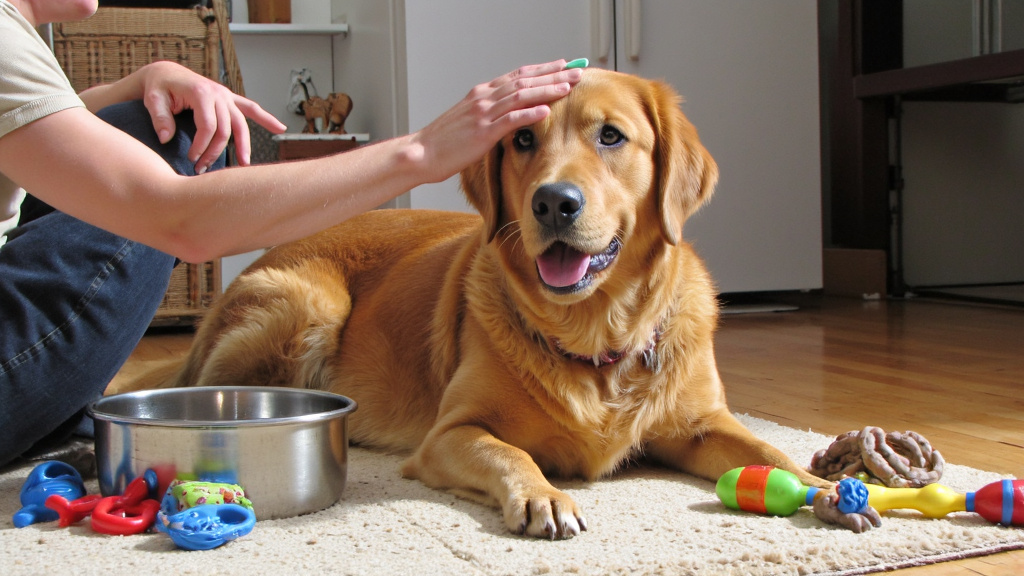
As autumn leaves drop, homes may suddenly transform into fur-filled wonderlands. This isn’t coincidental—fall is prime shedding season for many dogs. Owners often find themselves unprepared for the seasonal fur explosion that occurs every September!
The science behind fall shedding is fascinating. As daylight decreases and temperatures cool, dogs’ bodies naturally respond by shedding their lighter summer coats to make way for denser winter fur. This biological process is particularly noticeable in double-coated breeds like Siberian Huskies, Golden Retrievers, and Bernese Mountain Dogs, who have both a soft, insulating undercoat and longer guard hairs on top.
Double-coated dogs experience more dramatic seasonal shedding because they’re replacing their entire undercoat. This undercoat serves as natural insulation, helping them stay warm during colder months. The transition begins when their body senses changing light patterns, not just temperature shifts. Dogs with single coats tend to shed consistently year-round, making fall shedding less noticeable.
Nutrition and Hydration Support
What a dog eats directly impacts their skin health. Foods rich in omega fatty acids strengthen the skin barrier and reduce inflammation. Consider adding a teaspoon of fish oil to a dog’s meals (based on a medium-sized dog) or incorporating omega-rich treats like salmon into their diet. Always consult a veterinarian before making dietary changes, especially for dogs with existing health conditions.
Proper hydration plays a crucial role in skin health. Some dogs drink less water in cooler weather, leading to dehydration that worsens skin problems. Ensure a dog always has access to fresh water, and consider adding moisture to their diet through wet food if they’re reluctant drinkers. This internal hydration supports skin elasticity from the inside out.
Environmental Adjustments
The home environment significantly affects a dog’s skin condition. Indoor heating systems dry out the air, creating the same challenges as winter weather but often overlooked in fall. Using a humidifier in rooms where a dog spends most time helps maintain healthy moisture levels for their skin. Additionally, after outdoor walks, gently wipe a dog’s paws and belly with a damp cloth to remove allergens and prevent paw pad dryness.
For dogs with particularly sensitive skin, consider using hypoallergenic bedding washed in fragrance-free detergent. Skin allergies often flare during fall as mold spores increase with decomposing leaves, making environmental management essential for dogs with allergy relief needs. A clean sleeping area prevents additional irritation to already compromised skin.
What Special Paw Care Do Dogs Need During Fall?
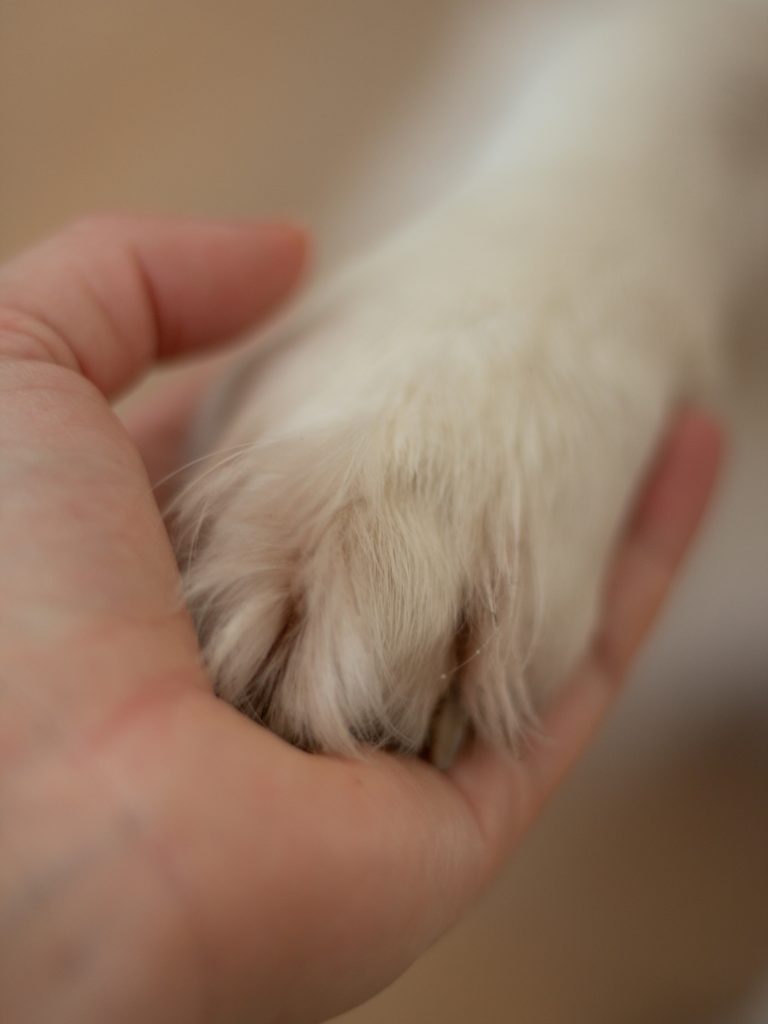
Fall brings unique challenges for dogs’ paws. Those summer-tough pads now face cooler temperatures, wet leaves, and changing terrain requiring special attention. More clients report paw-related issues once October hits—prevention is easier than treatment.
Autumn’s fluctuating weather is particularly harsh on paw pads. Cold mornings, frost, and wet conditions create problems. After walking a German Shepherd through a local park last November, cracks formed on her pads needing immediate attention.
Common Fall Paw Problems
During fall, dogs’ paws face challenges not present in warmer months. Paw pads can become dry and cracked when exposed to cold surfaces, especially after summer. Fallen leaves can hide sharp objects or collect between toe pads causing irritation. Seasonal allergies may manifest as paw licking or chewing, creating further issues.
Chemicals like antifreeze on sidewalks and driveways pose another concern. These can be toxic if a dog licks its paws after walks. More mud and debris can lodge between paw pads, creating conditions for yeast or bacterial growth.
Moisturizing Dog Paws
Pay special attention to paw care as sidewalks cool and become rougher on delicate paw pads.
Use specially formulated paw balms with natural ingredients like shea butter, coconut oil, or beeswax. Apply balm thinly on pads and between toes, allowing absorption before activity. For very dry pads, apply balm before bedtime to work overnight.
Consistency in conditioning matters. Even if paws look healthy, moisturizing twice weekly maintains elasticity and prevents cracking. Human moisturizers can contain harmful ingredients for dogs, so use products designed for canine paws.
Effective Debris Removal
After walks, a quick paw-check routine helps. Spread toes gently to find debris. A shallow pan of lukewarm water serves as an effective cleaning bath. For stubborn material, soft-bristled brushes designed for paw cleaning work better than rough cloths.
Keep fur between paw pads trimmed short to reduce debris collection. Long fur traps material and holds moisture against the skin, leading to infections. A simple nail trimming addition to grooming significantly reduces problems.
Protective Measures
For dogs with sensitive paws or those recovering from injuries, consider dog boots for walks through rough terrain or treated areas. Though dogs may initially resist boots, proper sizing and gradual introduction lead to acceptance. Alternatives include paw wax products creating temporary barriers against harsh surfaces.
Walk timing matters for paw health. Early morning walks mean dew-covered grass keeping paws damp. Consider mid-day walks when surfaces dry but temperatures remain moderate. This schedule adjustment reduces moisture-related paw issues common in fall.
Keep Your Dog Comfortable and Healthy This Fall with Proactive Grooming
As autumn settles in, a consistent fall grooming routine is more than just a seasonal chore—it’s a critical step in supporting a dog’s overall health, comfort, and skin resilience. Regular brushing, moisturizing baths, and attentive paw care go beyond controlling shedding or appearance; they allow a dog to thrive through humidity drops and increased allergens with the change in weather. Addressing each layer of a dog’s coat and skin prepares them for colder months and helps prevent issues before they start.
Modern pet care solutions, such as the Halo Collar, can further support efforts by enabling safe exploration during daily outdoor adventures. With features like smart boundary setting and real-time GPS tracking, Halo Collar provides peace of mind when letting a dog roam among fallen leaves and damp terrain, where skin and paw risks often hide.
By combining proactive grooming with thoughtful use of helpful technology, one gives a dog the best chance at an active, itch-free, and comfortable fall season. For more insight into canine wellness and seasonal care, visit the Dog Health page for expert advice and tips.

